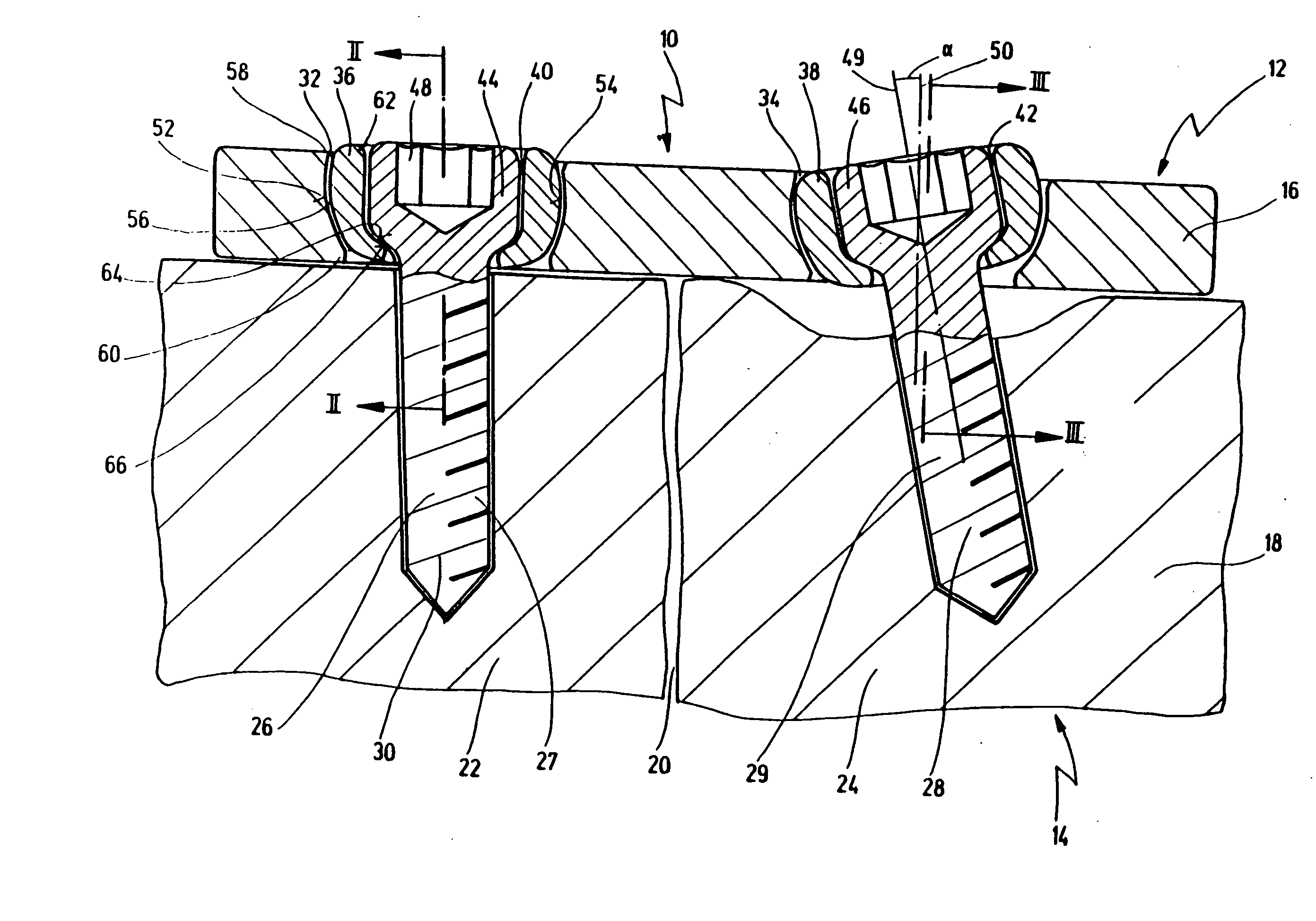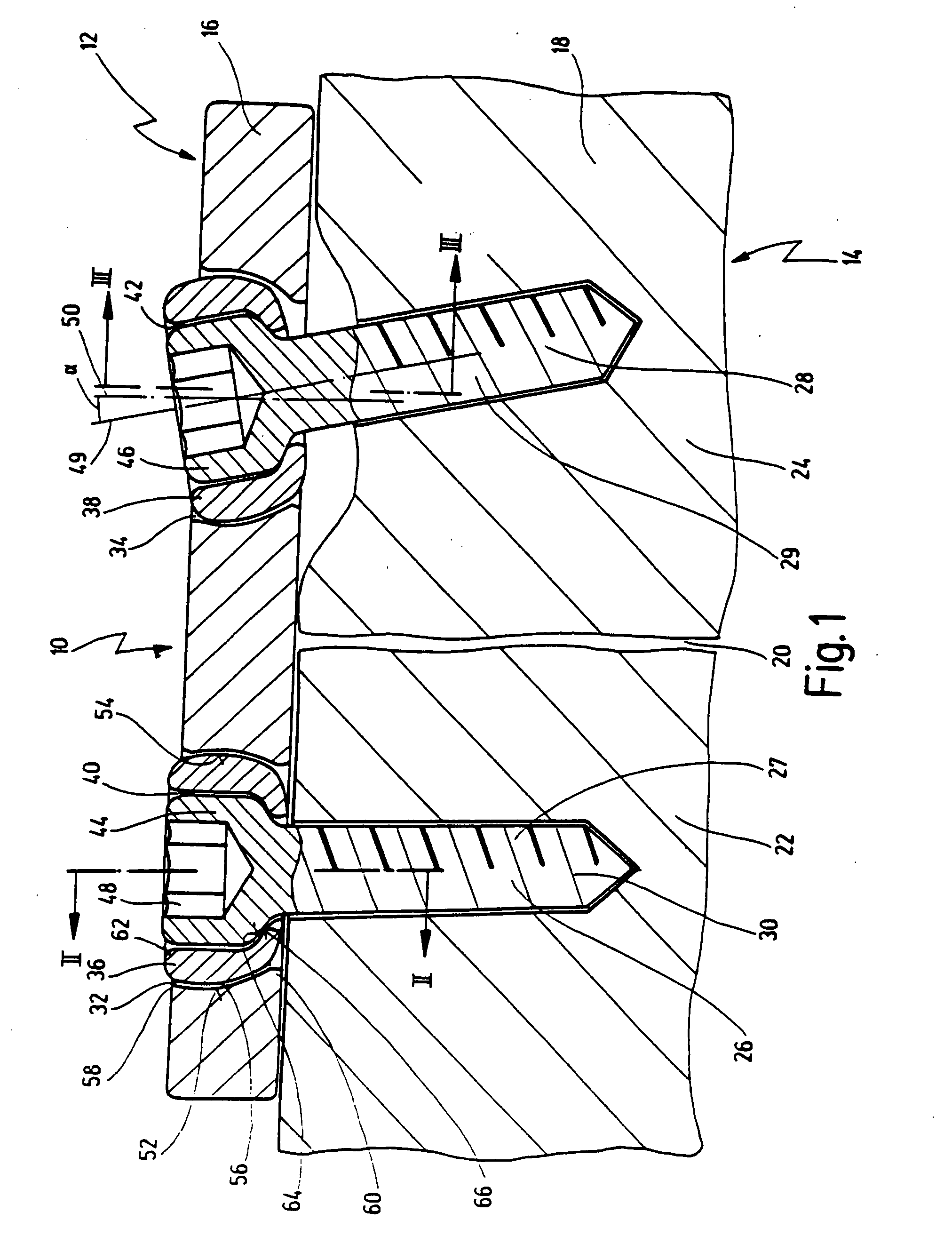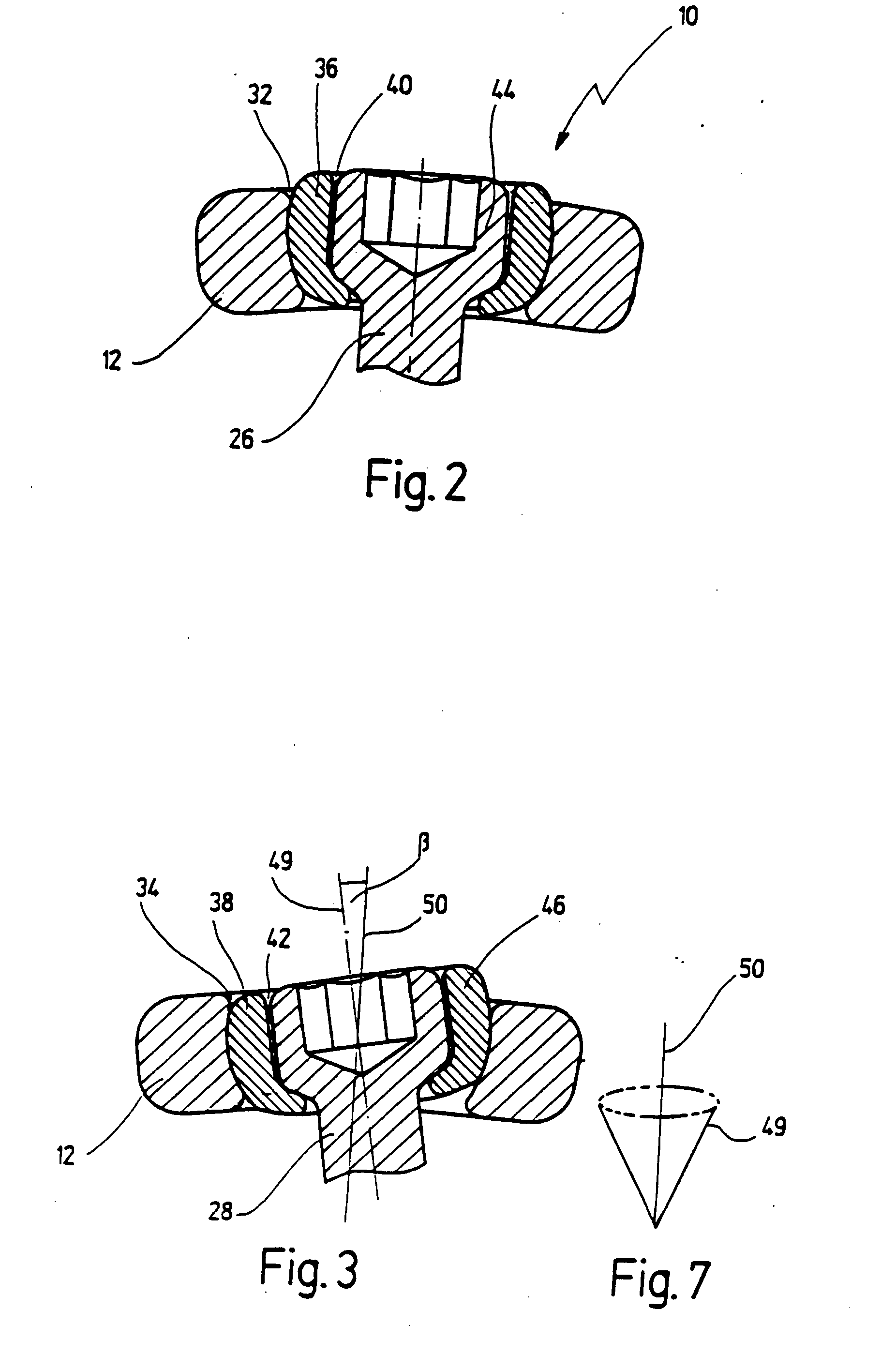Fastening assembly
a technology of fastening and assembly, which is applied in the field of fastening assembly, can solve the problems of not even being able to completely tighten down the screw, difficult or impossible to drill perpendicularly, and difficult to drill perpendicularly, and achieve the effect of tightening the frictional press and stable play-free anchoring of the bone bra
- Summary
- Abstract
- Description
- Claims
- Application Information
AI Technical Summary
Benefits of technology
Problems solved by technology
Method used
Image
Examples
Embodiment Construction
[0052] FIGS. 1 to 3 illustrate a fastening assembly designated with the numeral 10 for fastening a fixing element 12 to a substructure 14.
[0053] In the illustrated embodiment, the fixing element 12 is a brace 16 in the form of an approximately rectangular elongated plate, which is secured to a bone 18 having a fracture 20. Two bone parts 22, 24 separated by the fracture 20 are fixed to one another by the brace 16 to heal the fracture 20. The brace 16 is fastened with a first screw 26 and a second screw 28 to the bone part 22 and the bone part 24, respectively. The first screw 26 and the second screw 28 are bone screws, each having a threading 30 formed on a shaft 27, 29 of the screw 26, 28. The threading 30 cuts a corresponding thread in the bone parts 22, 24 when turning the screw 26 or 28.
[0054] The brace 16 includes a first bore 32 and a second bore 34, where a first bushing 36 is received in the first bore 32 and a second bushing 34 in the second bushing 38. The first bushing ...
PUM
 Login to View More
Login to View More Abstract
Description
Claims
Application Information
 Login to View More
Login to View More - R&D
- Intellectual Property
- Life Sciences
- Materials
- Tech Scout
- Unparalleled Data Quality
- Higher Quality Content
- 60% Fewer Hallucinations
Browse by: Latest US Patents, China's latest patents, Technical Efficacy Thesaurus, Application Domain, Technology Topic, Popular Technical Reports.
© 2025 PatSnap. All rights reserved.Legal|Privacy policy|Modern Slavery Act Transparency Statement|Sitemap|About US| Contact US: help@patsnap.com



